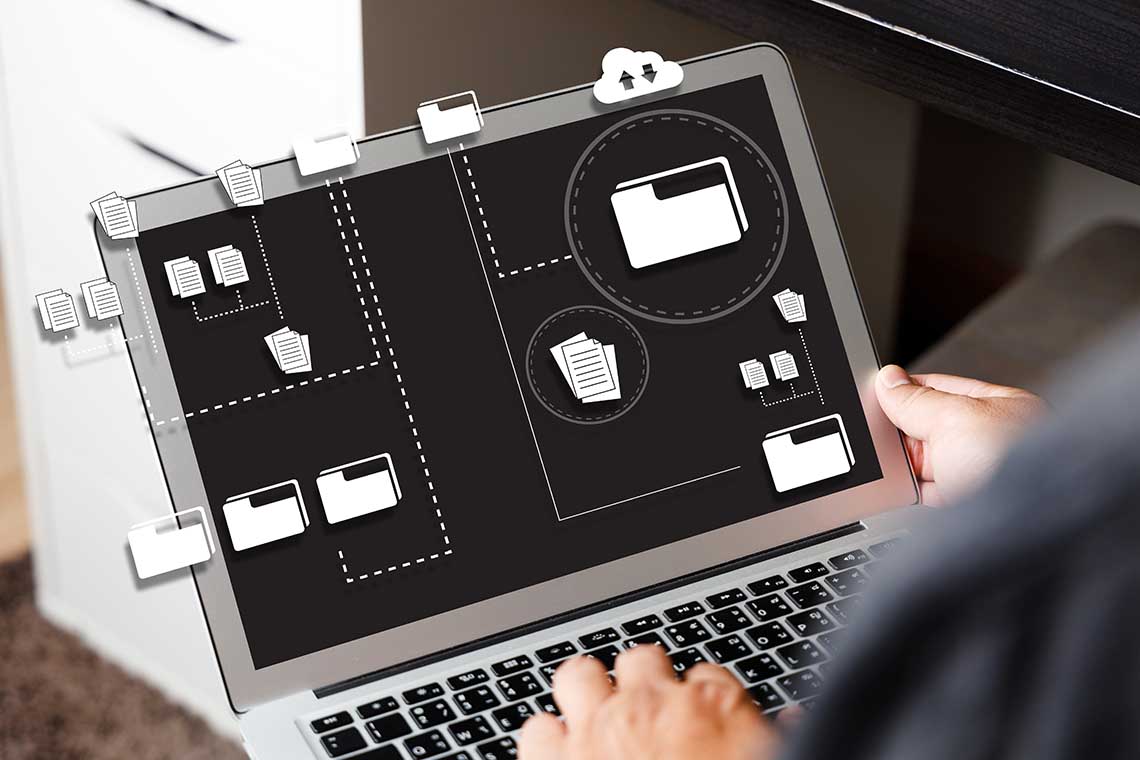In today’s increasingly digitized world, organizations deal with a growing volume of data daily. Data and analytics are the backbone of informed business decisions, lending valuable insights to drive growth and productivity. Companies seeking to gain market advantage must therefore be data-driven in their decision-making processes.
Since 2020, enterprise data volume has experienced an average annual growth rate of 42.2%. This growth is attributed to factors such as multi-cloud data environments, the increasing application of analytics, and the availability of IoT devices. Using sensor technologies for real-time data collection, IoT devices include items such as activity trackers, AI voice assistants, and smart home applications.
The volume and value of organizational data will only grow, delivering actionable insights to help propel innovation, cybersecurity, and overall business success. There are also vulnerabilities that come with every aspect of your organization’s approach to handling data. This is why many companies encrypt data, which restricts access to authorized users and obscures the information to anyone without the proper encryption key.
However, your encryption strategy is only as secure as the keys themselves. Each encryption key must be protected against unauthorized access, corruption, and loss. This is where an enterprise encryption key management plan comes into play, helping organizations manage their hundreds or thousands of encryption keys.
In this article, we will explore what an enterprise key management strategy is, how it benefits your business, and best practices for creating a key management plan.
What is an enterprise key management system?
Safe, accessible data depends on having strong cryptographic keys. Think of a cryptographic key as the tool that codes and decodes your sensitive information so that it can only be accessed and understood by authorized users.
A key management system safeguards encryption keys against unauthorized access, corruption, and loss. It is a multi-faceted process that includes changing keys regularly, controlling how and to whom keys are assigned, and protecting the central key repository.
Your organizational data can exist in different digital states, as well as in many different locations. For example, data exists in three states:
- Data at rest. When data is not being used or accessed, it is considered at rest. Data at rest might be stored on a computer, mobile device, database server, backup device, network storage, or cloud server storage.
- Data in use. Information that is being directly accessed, read, or processed by systems or users is categorized as data in use. This data state is vulnerable to security risks as it moves through the various parts of your IT infrastructure.
- Data in transit. Also known as data in motion, this state occurs as information transfers from a source to its destination, such as between different systems.
In addition to distinct states, data can be stored in many different places, such as:
- On-premises in physical storage, such as data servers and network-attached storage (NAS).
- In cloud storage services, including Dropbox, One Drive, SharePoint, and Google Drive.
- In a data warehouse, such as Oracle, Google BigQuery, and other database warehousing tools.
- Within a data lake, including Azure, AWS, Google, and other data lake solutions.
All of this data needs to be utilized by different parts of your organization, by many different people, with different levels of access. It also needs to be protected against loss, theft, and compromise. A cryptographic key management strategy keeps data safe and secure while making it accessible to designated users.
Why your business needs an enterprise key management plan
Key management is a complex but necessary process for data security. Without proper management and oversight, the compromise of any cryptographic key threatens your entire security infrastructure, allowing attackers to do the following:
- Access systems without authorization.
- Decrypt and steal sensitive data.
- Authenticate themselves as privileged users to access other sources of information.
Encrypted data cannot be retrieved and understood without the correct key. As such, access to keys must be carefully monitored and controlled. According to the US General Services Administration (GSA), key management is at least as important as the confidentiality and integrity of the data that the encryption keys protect.
Implementing encryption at various levels, such as databases, networks, endpoints, and files increases data security—at the cost of key management complexity. With all those disparate data sources, a consistent approach to encryption key management helps maintain control over your data and encryption keys.
Otherwise, each of those points in your scattered data stacks can become a possible point of human error or malicious access. Should encrypted data be stolen along with its key, the encryption itself is rendered useless. With cybercrime an ongoing and growing threat, key management should be a primary concern for enterprise organizations.
Storing encryption keys securely is just one component of an enterprise encryption key management strategy. It also includes the following:
- Limiting user access to encryption keys.
- Implementing secure key backup capabilities.
- Developing policies and standards for key management processes.
- Securing access to key storage.
- Using a single key for a single purpose.
- Documenting procedures for the generation, storage, distribution, and destruction of encryption keys.
Best practices for enterprise key management
Your key management strategy is critical for managing key lifecycles and facilitating secure, reliable distribution of cryptographic keys. The more data you have to encrypt, the more keys you have. The more keys you have, the more important it becomes to adhere to best practices for key management.
Key management is so important to data security that it is addressed by the National Institute of Standards and Technology (NIST). Recommendations for key management are found in NIST Special Publication 800-57, which states that “the security of information protected by cryptography directly depends on the strength of the keys, the effectiveness of cryptographic mechanisms and protocols associated with the keys, and the protection provided to the keys. Secret and private keys need to be protected against unauthorized disclosure, and all keys need to be protected against modification.”
Here are some enterprise key management strategy best practices:
1. Centralize your management systems
Companies tend to use hundreds or thousands of encryption keys, but 53% of organizations do not know exactly how many keys they have. By centralizing your enterprise key management system, it is easier to protect, manage, organize, and use your cryptographic keys.
Centralized key management stores keys and certificates in a safe location, separated from the encrypted data and systems. Should the encrypted data be compromised, the keys remain protected, reducing the potential damage in the event of a data breach.
2. Enable access controls
Not everyone in an organization needs the same level of access to data or encryption keys. For example, the person who creates and manages a key should not have access to the protected data. Limit vulnerabilities by granting key access based on strict, need-to-know user roles. This is achieved by following the Principle of Least Privilege, which gives users or processes only the privileges that are essential to performing the intended job function.
It is also important to ensure that no one individual holds sole access to your enterprise key management system. Should that user or administrator lose their credentials or leave the company, you need to have a backup mechanism to shield the keys and the data they protect.
3. Implement key backups
If an encryption key is lost or compromised, you cannot use it to recover encrypted data. Ensure you have back up capabilities so that you can quickly restore lost keys.
The database used to store backup keys should be encrypted using at least a FIPS 140-2 validated process. Back up encryption keys frequently, even multiple times per day. To increase their protection, the backed up keys themselves should also be encrypted.
4. Employ audit logs
Despite your best efforts, accidents can and will happen. An audit log helps you track activities involving encryption keys, such as who accessed a key, when, and for what purpose. Should an encryption key be lost or compromised, you can review the audit log details to aid in the investigation.
Audit logs are also beneficial for demonstrating compliance with various regulations. For example, PCI DSS requires that you keep audit logs files for at least a year and be knowledgeable about who uses system access and for what purposes. They are also important for HIPAA compliance, which requires the monitoring of user activities.
How to create an enterprise key management system
Effective key management system is a balancing act between accessibility and security. This requires a centralized approach to secure data in various environments while maintaining and managing the associated keys.
The first step in developing a key management strategy is to create a comprehensive inventory of your cryptographic keys. This includes not only the location of the keys, but also their intended use and who has access to them.
Next, identify any risks that could compromise your data security. For example:
- Weak keys. If you use a weak encryption algorithm, you increase the likelihood of an attacker bypassing the encryption. Make sure that the key length is complex enough to secure sensitive data, such as with AES encryption algorithms.
- Improper storage. Never store keys in the same location as the encrypted data. Otherwise, a malicious actor can steal and decrypt data within a single breach event.
- Key reuse. Encryption keys should have a single, distinct purpose. They should not be duplicated or reused for different tasks.
You will then need to develop policies and procedures governing the full lifecycle of encryption keys. According to the NIST, this includes the key’s generation, storage, establishment, entry, output, use, and destruction.
- Creation. Define who can create encryption keys. For example, is it the sole responsibility of the key manager administrator, or will you allow authorized users to create keys to protect encrypted files on their devices?
- Storage. Keys must be stored securely, such as in a hardware security module (HSM) or otherwise processed with encryption modules. They should not be stored in plaintext format.
- Use. Authorized systems and users should be able to easily retrieve keys for encryption and decryption processes. To help control access, keys should not be used in the same place they are stored.
- Rotation. A single key should not be used indefinitely to protect a data set. Rotating keys at regular intervals, such as every week or every year, limits the amount of data that could potentially be compromised if something happens to the encryption key.
- Destruction. If a key is no longer in use or has been compromised, it should be destroyed in a manner that makes its recovery impossible. Removing all traces of the keying material protects sensitive encrypted data.
A strategic approach to key management helps protect your encryption keys against unauthorized disclosure, modification, or theft. To achieve optimal security, many companies use a variety of tools to protect data across different states and environments.
One such tool is WinZip® Enterprise, which combines data encryption, compression, sharing, and management in a powerful, customizable solution. With centralized IT control, it is easy to deploy and enforce security policies across the organization.
See how WinZip Enterprise fits into a solid key management plan for your enterprise.





